The Nakajima C6N Saiun (彩雲, “Iridescent Cloud”) was the fastest IJN carrier-based reconnaissance aircraft of the war. Very advanced for its time, it first flew on 15 May 1943, and was produced and introduced from September 1944 on the few surviving carriers. Allied reporting name “Myrt” (M for reconnaissance models). Only 463 were delivered in six main and two sub-versions on a short production span. It was not a dogfighter but more Mosquito-like in some ways. No fighter of the USN or USAAF could catch the Saiun in WW2. #IJN #imperialjapanesenavy #nakajima #saiun https://bit.ly/3DILfeK
Design development
The C6N was developed from a 1942 IJN specification calling for a carrier-based reconnaissance plane with a specified speed of 350 knots (650 km/h) at 6,000 over 2,500 nautical miles (4,960 km) or range. Nakajima proposed its N-50 at first, which had two 1,000 hp (750 kW) engines in tandem inside the fuselage and driving two propellers on the wings to help clean up the latter from any drag.
But since the company also worked on the latest Homare capable of 2,000 hp (1,500 kW) the dual powerplant, which had known cooling issues, was abandoned. Nakajima decided went for the single-engine layout, but meantime, engineers of the engines department bank tests were less than stellar. The output fell short of expectations. The project had to be revised to be as nimble, light and streamlined as possible. The C6N made its first flight on 15 May 1943. The prototype demonstrating 639 km/h (345 kn; 397 mph), less than specified, and it was by pushing Homare engine to its very limits. It proved generally was disappointing especially at altitude. Therefore Nakajima went on pushing the enveloped on 18 further prototypes and pre-production models. Eventually, it seems the last was ablt to reach the specified 650 kph and had better altitude characteristics, and the Saiun was ordered at last by the IJN in February 1944.
Detailed Design
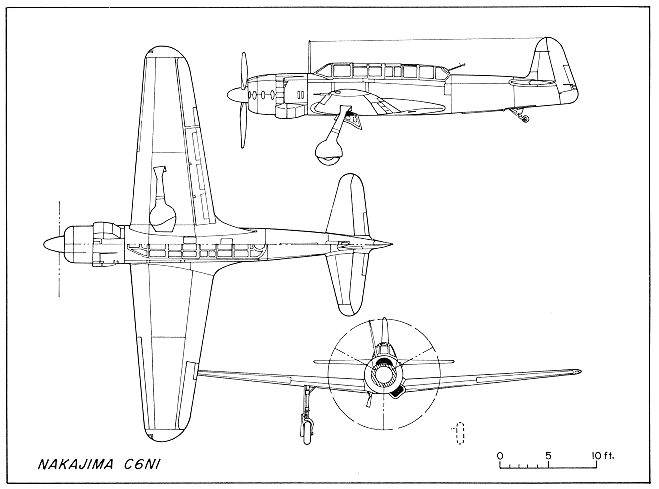
The final result had a long and extremely narrow cylindrical fuselage: Its diameter started as the same as the engine and was narrowed gradually down to the tail. There was a single, long canopy under which sat all three crewmen in tandem: Pilot, Observer and rear gunner. Due to weight savings, there were no armor anywhere to protect the pilot but at least self-sealing tanks.
General structure and wings
The C6N had classic Nakajima low-mounted laminar flow wings, which span was almost equal to the fuselage, and which housed fuel tanks. They were fitted with Fowler and slit flaps, plus leading-edge slats helping to diminish landing speed as much as possible thanks to aircraft carrier use. Like the B6N Tenzan torpedo bomber they shared many characteristics and parts, including their vertical stabilizer, angled slightly forward to take less space while staying efficient, calculated with drag in mind. Construction was all-metal, with stressed duralumin over aluminium framing and steel internal structural framing. The landing gear was classic, deploying outwards for a better landing span, same as the B6N. The tail wheel was fully folding inside, leaving no bump. In general the profile was very clean, with as few asperities as possible, including no air intake.
Powerplant & Performances
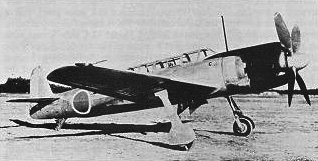 The prototype flew with a Nakajima NK9B Homare 11, which was a 18-cylinder, air-cooled radial piston engine which devemoped 1,485 kW (1,991 hp) less than the expected 2,000 hp. The output treshold was surpassed with the Homare 23, 25 and the late war Homare 42 producing 2,200 hp (1,640 kW). Unfortunately it was way too big to fit the C6N. Nevertheless, the Myrt was upgraded to the NK9K-L Homare 22 and Nakajima NK9H Homare 21 in tests, the production C6N1 Saiun Model 11 with its three-blade propeller being equipped with the NK9H Homare 21 engine. The best variant was the C6N2 Test production Saiun Kai which had a four-blade propeller and the new 1,980-hp (1,476-kW) Nakajima NK9K-L Homare 24-Ru turbocharged engine for altitude flights. Only two prototypes in February 1945 tests this configuration.
The prototype flew with a Nakajima NK9B Homare 11, which was a 18-cylinder, air-cooled radial piston engine which devemoped 1,485 kW (1,991 hp) less than the expected 2,000 hp. The output treshold was surpassed with the Homare 23, 25 and the late war Homare 42 producing 2,200 hp (1,640 kW). Unfortunately it was way too big to fit the C6N. Nevertheless, the Myrt was upgraded to the NK9K-L Homare 22 and Nakajima NK9H Homare 21 in tests, the production C6N1 Saiun Model 11 with its three-blade propeller being equipped with the NK9H Homare 21 engine. The best variant was the C6N2 Test production Saiun Kai which had a four-blade propeller and the new 1,980-hp (1,476-kW) Nakajima NK9K-L Homare 24-Ru turbocharged engine for altitude flights. Only two prototypes in February 1945 tests this configuration.
Armament
Due to its role and speed constraints, the C6N carried no significant armament as designed, just a single lexibly-mounted, rearward-firing 7.92 mm Type 1 machine gun, manned by the tail gunner. When not in use, it was folded inside the fuselage. Theoretically, if converted as an attack plane, it could have been equipped with attach points for a variety of bombs and there was definitely hardpoints under the belly to hold an additional fuel tank, extending the range. From there it was still possible to attach a standard aerial torpedo, yet with miuch degraded performances. During the war various tests were also made as an interceptor, with an angled dorsal gun, either a pair of 20mm, or a single 30mm to deal with B-29 bombers in 1945, inspired by the German Schräge Musik system. They were tested but no production followed (see variants below).
Production and Variants
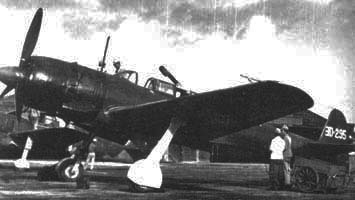 Only one large production variant, C6N1, and the basic Type 17 pre-production serie. About four more prototypes and 5 projects. Interestingly the success of the Mosquito led to the design of an equivalent version, the wooden-built C6N6. However like the others it remained at paper stage only.
Only one large production variant, C6N1, and the basic Type 17 pre-production serie. About four more prototypes and 5 projects. Interestingly the success of the Mosquito led to the design of an equivalent version, the wooden-built C6N6. However like the others it remained at paper stage only.
-C6N1 Experimental Type 17 carrier reconnaissance plane (17-Shi Kanjō Teisatsuki)
-3 prototypes, 16 supplementary prototypes with 4-blade propeller (later 3-blased) and NK9K-L Homare 22 engine
-Modified prototype with the NK9H Homare 21 engine renamed Shisei Saiun for pre-production in July 1943.
–C6N1 Saiun Model 11 Production model. 3-blade prop. and Nakajima NK9H Homare 21.
-Project torpedo bomber C6N1-B (Model 21)
-Prototype C6N1 Saiun Model 11 night fighter variant*
-Two C6N2 Test production Saiun Kai (Model 12), 4-blade prop. 1,980-hp (1,476-kW) NK9K-L Homare 24-Ru (turbocharged), February 1945.
-Project C6N3 high-altitude night fighter variant C6N2 with 2x 20 mm cannons.
-Incomplete prototype: C6N4 Test production Saiun Kai 2 with the MK9A Ha 43-11 Ru turbocharged.
-Project C6N5 Saiun Kai 3 torpedo bomber.
-Project C6N6 Test production Saiun Kai 4, Wooden-built.
The Night Fighter:
This was not a regulation naval aircraft as the C6N1-S was not discovered in IJN official documents (otherwise burnt?). It had a 30 mm Type 5 cannon in the back, transverse-firing, five production models received two extra 20 mm Type 99-1 cannons, one of which is housed at the Paul E. Garber Preservation and Storage Facility.
Service
The C6N was deployed in the following naval air groups:
-Yokosuka Kōkūtai, 121, 131st, 132nd, 141st, 171st, 210th, 302nd, 343rd, 701st, 723rd, 752nd, 762nd, 801st and 1001st Kōkūtai.
It was also used by the Navy land-based Aerial Squadron for Reconnaissance, and the 3rd, 4th, 11th, 12th and 102nd Hikōtai.
It was also used by Kamikaze groups in mid-1945, the 1st Mitate Special Attack Group (from 752nd Kōkūtai, active), Sairyū Unit (from 752nd Kōkūtai, disbanded without a first sortie) and “Saiun Unit” (models from 723rd Kōkūtai, no sortie).
⚙ specifications |
|
| Empty Weight | 2,968 kg (6,543 lb) |
| Gross Weight | 4,500 kg (9,921 lb) |
| Max TO Weight | 5,260 kg (11,596 lb) |
| Length: | 11 m (36 ft 1 in) |
| Wingspan: | 12.5 m (41 ft 0 in) |
| Airfoil: | K151 ; tip: K159 |
| Height: | 3.96 m (13 ft) |
| Wing area: | 25.5 m2 (274 sq ft) |
| Wing Loading: | 176 kg/m2 (36 lb/sq ft) |
| Engine | Nakajima NK9B Homare 11 18-cylinder air-cooled radial piston engine, 1,485 kW (1,991 hp) |
| Propeller | Fixed pitch, 4 bladed metal, constant-speed metal propeller |
| Power/mass: | 0.33 kW/kg (0.20 hp/lb) |
| Top Speed | 610 km/h (380 mph, 330 kn) at 6,100 m (20,013 ft) |
| Cruiser Speed | 390 km/h (240 mph, 210 kn) |
| Rate of climb | ? |
| Time to altitude: | 6,000 m (19,685 ft) in 8 min 9 sec |
| Ceiling | 10,470 m (34,350 ft) |
| Ferry Range | 5,300 km (3,300 mi, 2,900 nmi) (with auxiliary fuel) |
| Range | ? |
| Armament | 1× flexibly mounted rearward-firing 7.92 mm Type 1 MG |
| Crew | 3: Pilot and observer, gunner |

C6N-1 Prototype in 1943

C6N-1 Model 11, Atsugi Naval Air Base, Kanagawa Prefecture, 3th Hikotai, 302th Kokutai, 1945

C6N-1, 11th Hokutai, 762th Kokutai, March 1945

C6N planned for IJN Shinano before she was sunk in 1944.

Suicide Attack Group Azusa Tokubetsu Kougekitai Kanoya NB March 1945

C6N-1 Matsuyama Naval Air Base, Ehime Prefecture, February 1945

C6N1-S of Kokutai 302, Atsugi Air Base, August 1945. Experimental interceptor with an oblically-mounted Type 5 30 mm gun. Crew: Hiroshi Yakuda, Taro Fukuda. One combat mission, in teh night of 1st August, firing ten rounds at a B-29. Fate unknown.
Photos
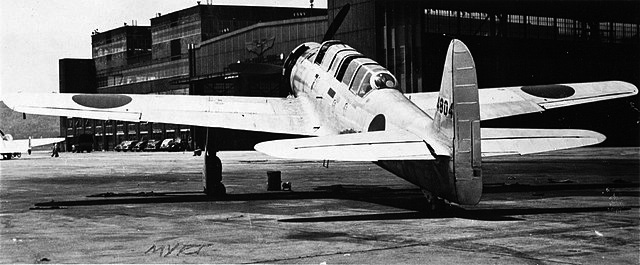
Nakajima C6N on tarmac
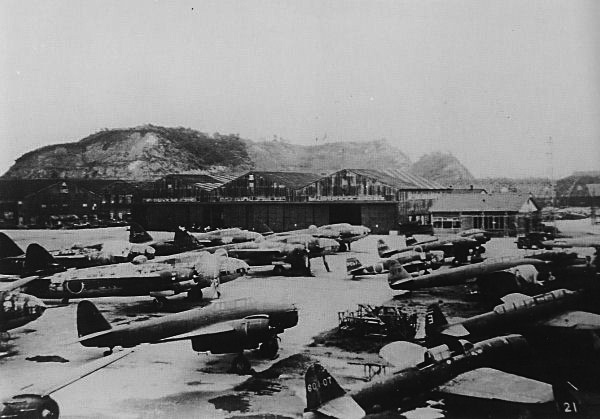
Nakajima C6N at Oppoma air base, 1945
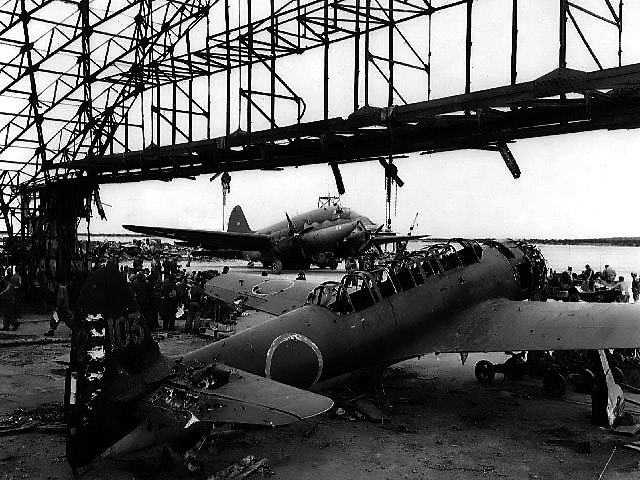
Nakajima C6N-1 of a reconnaissance aircraft 121st Kokutai
Src/Read more about the Nakajima C6N:
Books
Francillon, René J. Japanese Aircraft of the Pacific War. London: Putnam & Company Ltd. 1970.
Francillon, René J. Japanese Carrier Air Groups, 1941–45. London; Osprey Publishing Ltd., 1979.
Huggins, Mark (January–February 2004). “Hunters over Tokyo: The JNAF’s Air Defence of Japan 1944–1945”. Air Enthusiast
Mondey, David. The Concise Guide to Axis Aircraft of World War II. London: Chancellor Press, 1996.
Famous Airplanes of the World No. 108 Carrier Reconnaissance Plane “Saiun”, Bunrindō (Japan), 2005.
The Maru Mechanic No. 15 Nakajima C6N1 Carrier Based Rec. Saiun, Ushio Shobō (Japan), 1979.
Model Art, No. 458, Special issue Imperial Japanese Navy Air Force Suicide Attack Unit “Kamikaze”, Model Art Co. Ltd.
Kazuhiko Osuo, Kamikaze, Kōjinsha (Japan), 2005.
Links
historyofwar.org/
wiki
on combinedfleet.com
airandspace.si.edu
militaryfactory.com/
airpages.ru/
aviastar.org/
daveswarbirds.com
On scalemates.com

 Latest Facebook Entry -
Latest Facebook Entry -  X(Tweeter) Naval Encyclopedia's deck archive
X(Tweeter) Naval Encyclopedia's deck archive Instagram (@navalencyc)
Instagram (@navalencyc)





 French Navy
French Navy Royal Navy
Royal Navy Russian Navy
Russian Navy Armada Espanola
Armada Espanola Austrian Navy
Austrian Navy K.u.K. Kriegsmarine
K.u.K. Kriegsmarine Dansk Marine
Dansk Marine Nautiko Hellenon
Nautiko Hellenon Koninklije Marine 1870
Koninklije Marine 1870 Marinha do Brasil
Marinha do Brasil Osmanlı Donanması
Osmanlı Donanması Marina Do Peru
Marina Do Peru Marinha do Portugal
Marinha do Portugal Regia Marina 1870
Regia Marina 1870 Nihhon Kaigun 1870
Nihhon Kaigun 1870 Preußische Marine 1870
Preußische Marine 1870 Russkiy Flot 1870
Russkiy Flot 1870 Svenska marinen
Svenska marinen Søværnet
Søværnet Union Navy
Union Navy Confederate Navy
Confederate Navy Armada de Argentina
Armada de Argentina Imperial Chinese Navy
Imperial Chinese Navy Marinha do Portugal
Marinha do Portugal Mexico
Mexico Kaiserliche Marine
Kaiserliche Marine 1898 US Navy
1898 US Navy Sovietskiy Flot
Sovietskiy Flot Royal Canadian Navy
Royal Canadian Navy Royal Australian Navy
Royal Australian Navy RNZN Fleet
RNZN Fleet Chinese Navy 1937
Chinese Navy 1937 Kriegsmarine
Kriegsmarine Chilean Navy
Chilean Navy Danish Navy
Danish Navy Finnish Navy
Finnish Navy Hellenic Navy
Hellenic Navy Polish Navy
Polish Navy Romanian Navy
Romanian Navy Turkish Navy
Turkish Navy Royal Yugoslav Navy
Royal Yugoslav Navy Royal Thai Navy
Royal Thai Navy Minor Navies
Minor Navies Albania
Albania Austria
Austria Belgium
Belgium Columbia
Columbia Costa Rica
Costa Rica Cuba
Cuba Czechoslovakia
Czechoslovakia Dominican Republic
Dominican Republic Haiti
Haiti Hungary
Hungary Honduras
Honduras Estonia
Estonia Iceland
Iceland Eire
Eire Equador
Equador Iran
Iran Iraq
Iraq Latvia
Latvia Liberia
Liberia Lithuania
Lithuania Mandchukuo
Mandchukuo Morocco
Morocco Nicaragua
Nicaragua Persia
Persia San Salvador
San Salvador Sarawak
Sarawak Uruguay
Uruguay Venezuela
Venezuela Zanzibar
Zanzibar Warsaw Pact Navies
Warsaw Pact Navies Bulgaria
Bulgaria Hungary
Hungary

 Bundesmarine
Bundesmarine Dutch Navy
Dutch Navy Hellenic Navy
Hellenic Navy Marina Militare
Marina Militare Yugoslav Navy
Yugoslav Navy Chinese Navy
Chinese Navy Indian Navy
Indian Navy Indonesian Navy
Indonesian Navy JMSDF
JMSDF North Korean Navy
North Korean Navy Pakistani Navy
Pakistani Navy Philippines Navy
Philippines Navy ROKN
ROKN Rep. of Singapore Navy
Rep. of Singapore Navy Taiwanese Navy
Taiwanese Navy IDF Navy
IDF Navy Saudi Navy
Saudi Navy Royal New Zealand Navy
Royal New Zealand Navy Egyptian Navy
Egyptian Navy South African Navy
South African Navy






























 Ukrainian Navy
Ukrainian Navy dbodesign
dbodesign